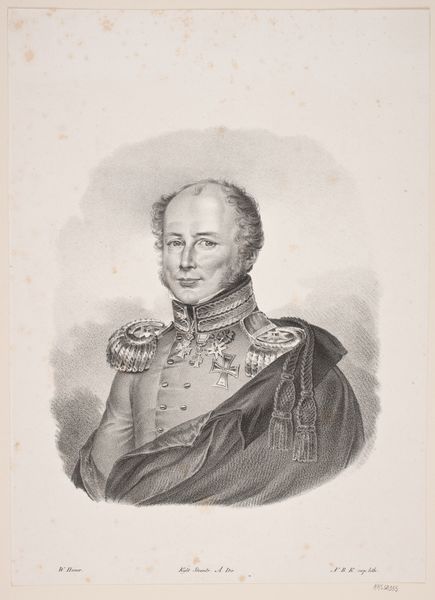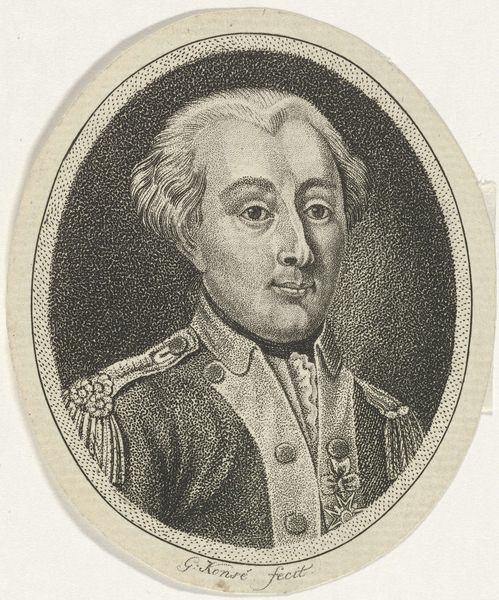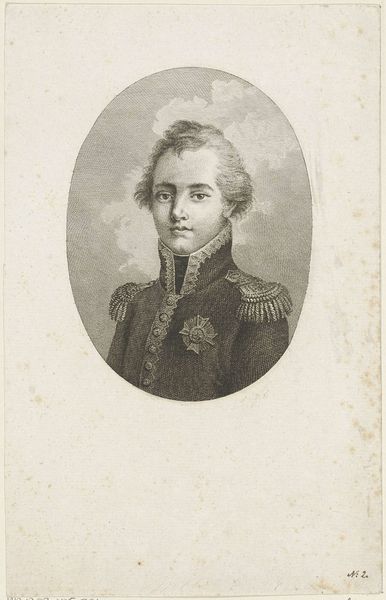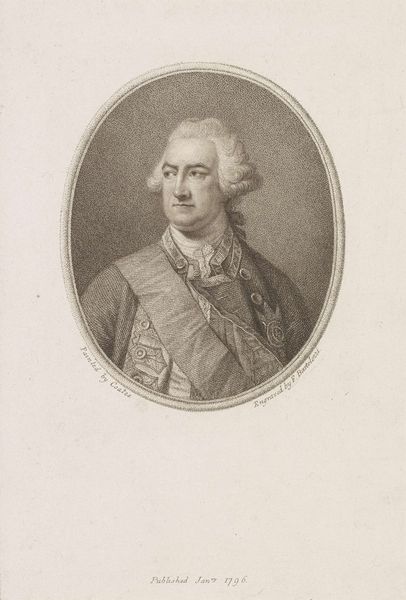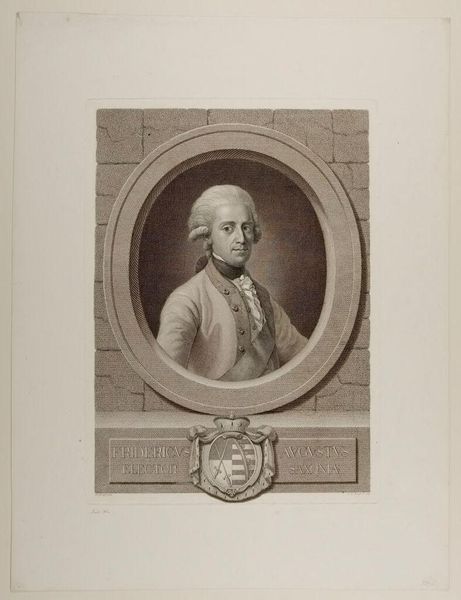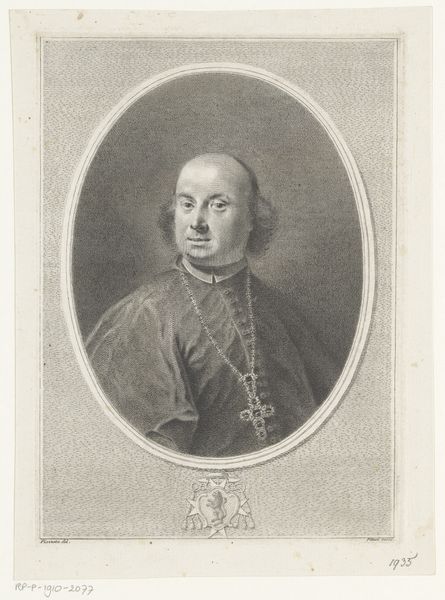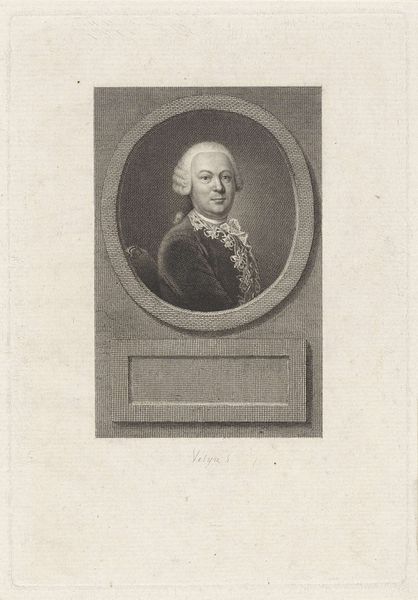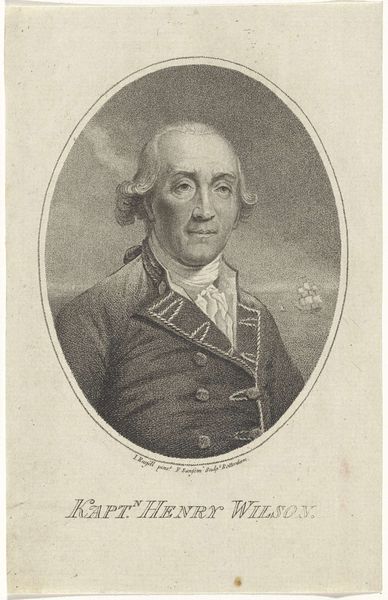
Copyright: CC0 1.0
Editor: This is Pieter Tanjé's portrait of "Charles XII, King of Sweden." It's a print, and the detail is incredible. The king seems rather contemplative. What do you see in how this image was presented to the public? Curator: Consider the context: printed portraits like these circulated widely, shaping public perception. Tanjé's Charles isn't presented as a powerful conqueror, but as a more approachable, even vulnerable figure. This challenges the traditional image of monarchy. What effect might this have on viewers? Editor: It makes him seem more human, less like an untouchable ruler. Almost like propaganda of approachability. Curator: Precisely! It is a calculated effort to connect with the populace. The portrait flattens social distance, making power appear less absolute. Editor: That reframing is fascinating. I hadn't considered the political implications of portraiture in that way before. Curator: These images are not just records, but active participants in shaping political and social realities. Something to keep in mind.
Comments
No comments
Be the first to comment and join the conversation on the ultimate creative platform.


